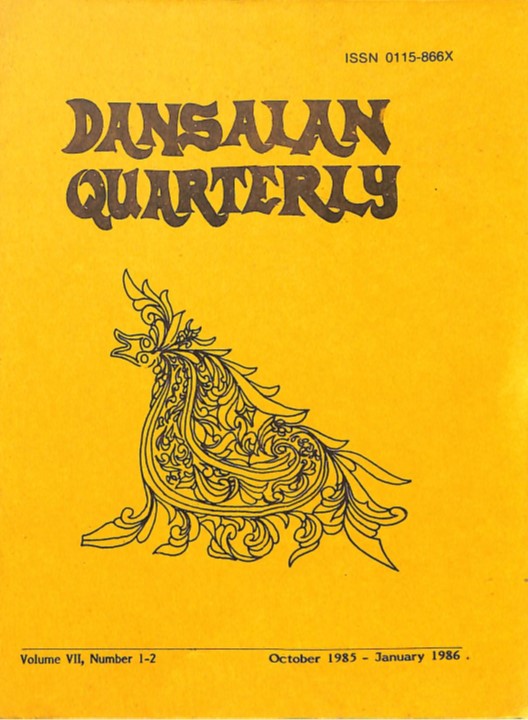October 1985-January 1986 Vol. VII, No. 1-2
10 July 2022 Dansalan Quarterly
Sarip investigates the economic situation of Maranao women in this journal. Notably, the writer probes into the available economic opportunities for them, in a culture that institutionalizes unequal treatment of men and women. The study presents salient findings on the changes in the economic activities of Maranao women, their specific economic role, the relationship between their demographic characteristics and their economic activities, and the effects of such activities in their income and educational development. Interviews with Maranao women reveal many shifts in the type of economic activities that they engage in. For instance, women in Mulondo are still engaged in the traditional family-based economic activities, while women in Marawi are engaged in community-based economic activities. Women in Marantao, on the other hand, are engaged in a mixture of both. From mat weaving to business, the study also reveals that Maranao women are immersed in a diverse set of economic activities. Moreover, more opportunities are now available to them in recent times. For one, Maranao women are now allowed to acquire education and take part in community development. With this newfound access to economic and social opportunities, their decision-making patterns were also examined. In summary, only a handful of studies have been done about Maranao women in Muslim literature, and Sarip’s study fill in some gaps in terms of the exploration of their livelihood and other economic activities.
Please email dansalan.quarterly@dcfi.edu.ph to request a copy of the issue.

